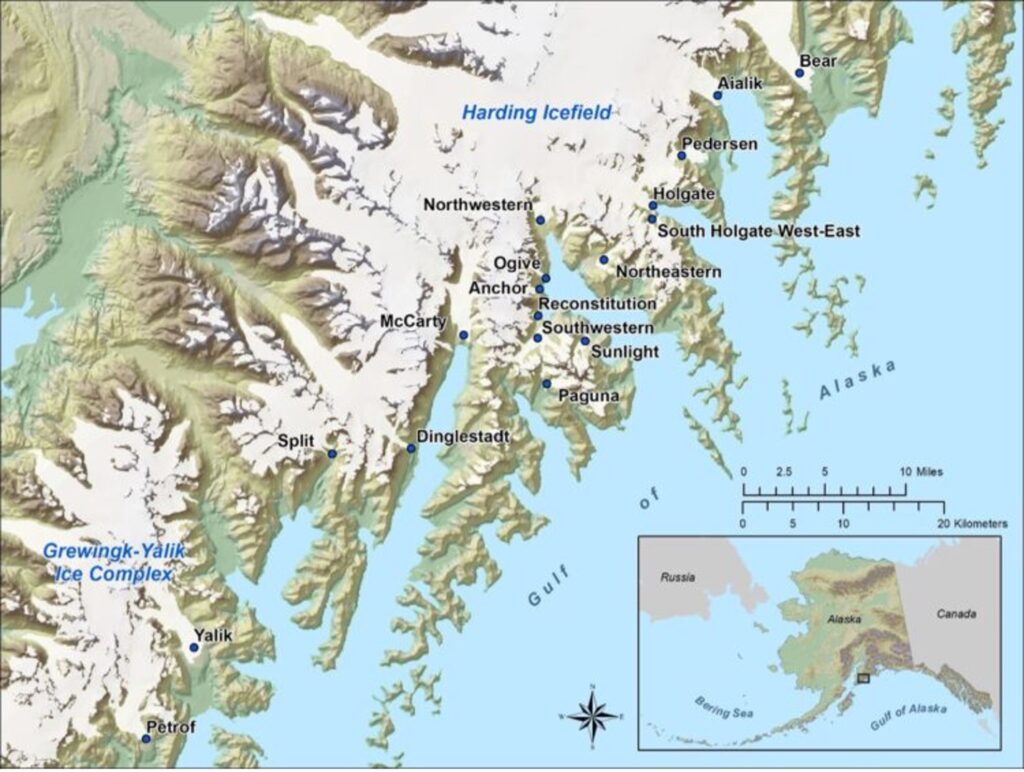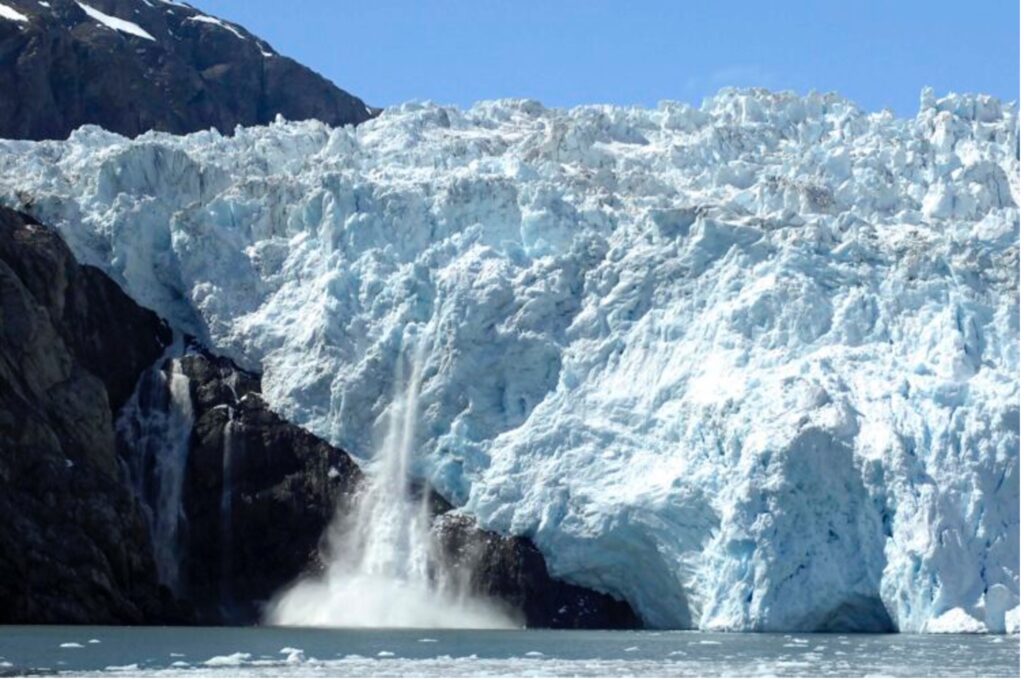A study by the University of Washington (UW) in Seattle, Washington State, and the US National Park Service has measured 38 years of change for glaciers in Kenai Fjords National Park in Alaska, and has found that glaciers terminating in the ocean are melting slower than those in lakes or on land.
The 271,000ha park hosts various glaciers; some terminate in the ocean, others in lakes or on land. The study, published on August 5 in the Journal of Glaciology, found that 13 of the 19 glaciers studied showed substantial retreat, four were relatively stable and two have advanced.

The data showed that lake-terminating glaciers, which include the Bear Glacier and Pedersen Glacier, are retreating the fastest. Bear Glacier retreated by 5km between 1984 and 2021, and Pedersen Glacier retreated by 3.2km during the same period.
Taryn Black, a UW doctoral student in the Department of Earth and Space Sciences and lead author of the study, said, “In Alaska, much glacier retreat is being driven by climate change. These glaciers are at a really low elevation. It’s possibly causing them to get more rain rather than snow in the winter in addition to warming temperatures, which is consistent with other climate studies in this region.”
One unexpected finding was that Holgate Glacier, which as a tidewater glacier terminates at the ocean, has advanced in recent years. Local boat operators had reported seeing newly exposed land near the glacier’s edge in 2020. However, the new analysis shows that the overall glacier has been advancing for about five years and appears to go through regular cycles of advance and retreat. The edges of most of the other tidewater glaciers were relatively stable over the study period.

The six land-terminating glaciers all showed an intermediate response, with most retreating, especially in summer months, but at a slower rate than the lake-terminating glaciers. The only other glacier that advanced during the study period was the land-terminating Paguna Glacier, which is covered in rock debris from a landslide caused by the 1964 Alaska earthquake. This debris insulates the glacier surface from melting.
To make the calculations, Black used 38 years of images captured by satellites in autumn and spring to trace outlines for each of the 19 glaciers – a total of about 600 outlines. She visually inspected each image to map the position of the glacier’s edge. Black used a similar approach in recent research to calculate the rate of retreat of marine-terminating glaciers in west Greenland.

According to the university, the new data for Alaska provides a baseline to study how climate change – including warmer air temperatures, as well as changes in both the types and amount of precipitation – will continue to affect these glaciers. All the glaciers in the study are considered maritime glaciers because they are subject to the warm, wet maritime climate.
For park managers, these results are expected to help to quantify the changes that have been and will continue to occur for the glaciers and their immediate environments.
Deborah Kurtz, physical science program manager at the US National Park Service in Seward, Alaska, and co-author of the study, said, “We can’t manage our lands well if we don’t understand the habitats and processes occurring on them. Interpretation and education are also an important part of the National Park Service mission. This data will allow us to provide scientists and visitors with more details of the changes occurring at each specific glacier, helping everyone to better understand and appreciate the rate of landscape change we are experiencing in this region.”
This study was done as part of an internship originally intended to take place at Kenai Fjords National Park. Black instead did the research remotely from Seattle and visited local glaciers at Mount Rainier. Part of this research was funded by the National Park Service’s Future Park Leaders program, a partnership between the Ecological Society of America and the US National Park Service.



